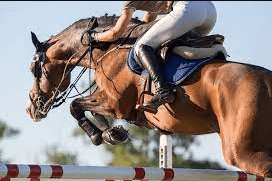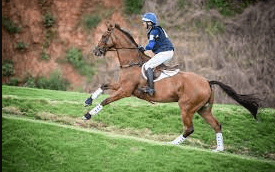How Can Injuries Be Prevented In Eventing?

Eventing is an exhilarating equestrian sport that combines the disciplines of dressage, cross-country jumping, and show jumping. However, like any high-energy sport, eventing carries a risk of injuries for both horse and rider. In order to ensure the safety and well-being of participants, it is crucial to implement preventive measures that mitigate the potential risks inherent in this demanding sport.
One key aspect in preventing injuries in eventing is proper training and conditioning. Horses and riders must undergo rigorous training programs that focus on developing strength, stamina, agility, and balance. This not only prepares them physically for the challenges they will face on course but also enhances their ability to respond effectively to unexpected situations. A well-conditioned horse is less likely to suffer fatigue-related accidents while a skilled rider who has honed their abilities through consistent training can better navigate obstacles with precision and control.
Another vital component in injury prevention is the use of safety equipment and gear. Riders should always wear a certified helmet designed specifically for equestrian sports as head injuries can have severe consequences. Additionally, protective vests are recommended to reduce the risk of rib fractures or internal injuries from falls or impacts. For horses, leg protection such as boots or wraps can help safeguard against possible cuts or bruises during jumps or other strenuous activities. The implementation of safety protocols and regulations regarding equipment usage plays a critical role in minimizing injury incidents during eventing competitions.
By adhering to these proactive measures such as proper training and conditioning along with utilizing appropriate safety equipment and gear, participants can significantly reduce the occurrence of injuries in eventing. Furthermore, it is essential for organizers and course designers to play their part by creating courses that prioritize safety without compromising on excitement or challenge. By considering factors such as terrain conditions, jump design, distance between obstacles, and overall layout designations can be made that promote safer competition environments while still offering competitors ample opportunities for showcasing their skills and experiencing moments of freedom.
Ultimately, a collective effort from riders, trainers, organizers, and governing bodies is required to ensure the well-being and longevity of eventing as a thrilling sport while minimizing the inherent risks associated with it.
Proper Training and Conditioning
Proper training and conditioning play a crucial role in minimizing the risk of injuries in eventing, ensuring the safety and well-being of both horses and riders. Injury prevention is a top priority in eventing, as the sport involves various challenges and obstacles that can put significant strain on both horse and rider.
Fitness training is an essential component of proper preparation for eventing. Horses need to be gradually conditioned to build strength, endurance, and flexibility to withstand the demands of the sport. This may involve regular exercise routines that focus on cardiovascular fitness, muscular strength, and agility.
Riders also need to engage in specific exercises to improve their balance, core stability, and overall fitness level. By following a structured training program that includes regular exercise sessions for both horses and riders, eventers can minimize the risk of injuries by ensuring they are physically prepared for the demands of the sport.
Additionally, proper training techniques should be employed to ensure correct form and technique when tackling obstacles or performing movements during competitions. Overall, investing time in comprehensive fitness training programs will not only enhance performance but also significantly reduce the likelihood of injuries occurring during eventing competitions.
Safety Equipment and Gear
Appropriate safety equipment and gear play a crucial role in minimizing the risk of harm during eventing. Research indicates that the use of protective vests has been shown to reduce the severity of chest injuries by 70%.
Safety standards in eventing require riders to wear helmets that meet certain criteria, such as ASTM/SEI certification. These helmets are designed to absorb impact and protect the head from potential injuries.
Additionally, other safety equipment such as body protectors, safety stirrups, and gloves can provide additional protection for riders.
Rider education is also an important aspect of injury prevention in eventing. It is essential for riders to receive proper training on how to handle horses safely and effectively navigate different obstacles during competitions. By understanding the principles of balance, position, and control, riders can improve their ability to stay secure in their saddles and minimize the risk of falls or accidents.
Overall, adherence to safety standards and continuous rider education are key factors in preventing injuries during eventing activities.
Course Design and Preparation
This discussion will focus on the importance of ensuring safe and well-maintained cross-country courses in eventing.
Course designers and organizers should incorporate safety measures in jump design and construction to minimize the risk of injuries to both horses and riders.
Read also: What Is The Ideal Horse Breed For Barrel Racing?
Additionally, conducting comprehensive course inspections and risk assessments prior to the event can help identify potential hazards and address them proactively, further enhancing the safety of the competition.
Ensure Safe and Well-Maintained Cross-Country Courses
To enhance the safety of cross-country courses in eventing, meticulous attention must be paid to their regular maintenance and upkeep.
Course maintenance involves a comprehensive approach that includes assessing and addressing any potential hazards or abnormalities on the course. This can include regularly inspecting jumps, fences, and footing conditions to ensure they are in good condition and free from any defects or dangers.
Additionally, ongoing maintenance should focus on keeping the course clear of debris, such as fallen branches or rocks, which could pose a risk to both horse and rider.
Rider education is also crucial in preventing injuries in eventing. By providing thorough training and education to riders about course safety protocols and techniques for navigating obstacles safely, they can be better equipped to make informed decisions while riding.
Overall, ensuring safe and well-maintained cross-country courses requires proactive measures that prioritize the welfare of both horses and riders through consistent monitoring, regular maintenance, and comprehensive rider education programs.
Incorporate Safety Measures in Jump Design and Construction
One key aspect of ensuring the safety and integrity of cross-country courses in eventing is to incorporate effective safety measures in the design and construction of jumps.
Jump design innovations and construction techniques play a crucial role in preventing injuries during eventing.
Designers are constantly developing new jump designs that aim to minimize risks, such as collapsible fences and frangible pins that break away upon impact.
These innovations help to reduce the force exerted on both the horse and rider, decreasing the likelihood of serious injuries.
Additionally, construction techniques must be carefully considered to ensure jumps are built with sturdy materials that can withstand the forces exerted during competition.
Proper footing around jumps is also essential to provide horses with secure takeoff and landing surfaces, reducing the risk of accidents or falls.
By incorporating these safety measures into jump design and construction, event organizers can proactively mitigate potential risks and create a safer environment for both horses and riders.
Conduct Comprehensive Course Inspections and Risk Assessments
To further enhance the safety measures in eventing, it is crucial to not only focus on jump design and construction but also conduct comprehensive course inspections and risk assessments.
By regularly inspecting the courses, event organizers can identify any potential hazards or areas that may pose a higher risk for injuries. This enables them to take proactive steps towards mitigating these risks, such as making necessary adjustments to the course layout or removing any obstacles that could potentially be dangerous.
Additionally, conducting thorough risk assessments allows organizers to evaluate various factors that could contribute to injuries, including weather conditions, ground quality, and even the skill level of the riders participating. This information can then be used to develop emergency response plans and protocols, ensuring that appropriate measures are in place in case an injury does occur during an event.
By prioritizing course maintenance and emergency response planning, eventing can create a safer environment for both riders and horses while providing participants with the freedom to compete without unnecessary risks.
Frequently Asked Questions
How can event riders improve their balance and coordination?
Improving coordination and balance exercises can enhance event riders’ performance. Engaging in activities such as yoga, Pilates, and core strengthening routines can cultivate stability and agility, reducing the risk of injuries during eventing competitions.
What are the most common injuries in eventing and how can they be prevented?
The most common injuries in eventing include fractures, concussions, and soft tissue injuries. Prevention methods such as proper training, regular fitness conditioning, use of safety equipment, and course design improvements can help reduce the risk of these injuries.
Are there any specific exercises or drills that can help riders develop better reaction time?
Reaction time exercises can be beneficial for riders in eventing, as they improve their ability to respond quickly to unexpected situations. Focus and concentration are key components of these exercises, allowing riders to develop better reaction time and increase their overall safety while engaging in the sport.
What are the key factors to consider when selecting safety equipment for eventing?
When selecting appropriate safety equipment for eventing, several key factors should be considered. These include the type of eventing discipline, the level of experience and skill of the rider, the quality and fit of the equipment, and adherence to safety standards and regulations.
How can event organizers ensure that the course design is safe and suitable for all levels of riders?
Event organizers can ensure rider safety and suitable course design by implementing proactive measures. They should consider the skill levels of participants, create challenging yet manageable obstacles, and regularly assess and update the course to maintain its integrity.
Conclusion
In conclusion, preventing injuries in eventing requires a proactive approach that encompasses proper training and conditioning, the use of safety equipment and gear, as well as thoughtful course design and preparation.
By ensuring that riders are adequately trained and conditioned to handle the physical demands of eventing, the risk of injuries can be significantly reduced. Additionally, the use of appropriate safety equipment such as helmets, body protectors, and stirrup irons with release mechanisms can provide an added layer of protection.
Course designers and organizers play a crucial role in injury prevention by creating courses that are challenging yet safe for both horse and rider. This involves considering factors such as jump placement, terrain conditions, and potential hazards. Conducting thorough inspections before events to address any potential safety concerns is also essential.
Furthermore, implementing regular maintenance routines for jumps and equipment can help prevent accidents caused by faulty or deteriorating structures.
By adopting these proactive measures in eventing, injuries can be minimized or even avoided altogether. It is vital for all stakeholders involved in the sport – from riders to trainers to course designers – to prioritize safety above all else. Only through a collective effort can we ensure that eventing remains a thrilling but safe equestrian discipline for all participants.




